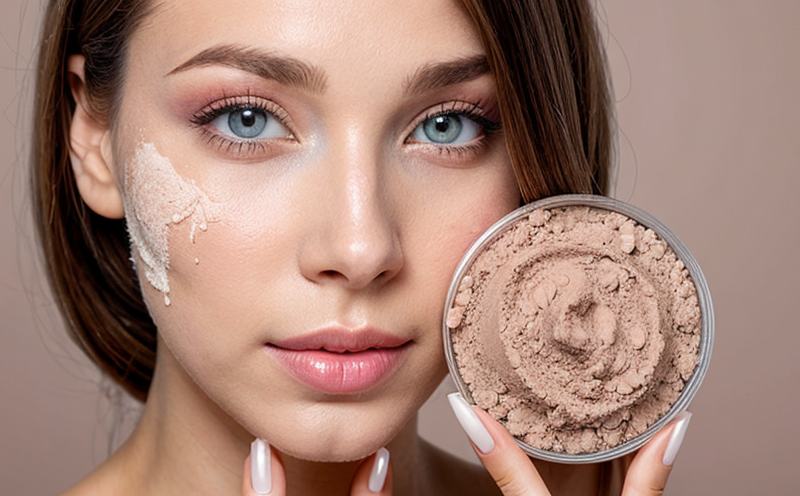Phenoxyethanol Sensitization Testing in Beauty Products
Phenoxyethanol, a preservative widely used in cosmetics and personal care products, plays a crucial role in extending the shelf life of these items by inhibiting microbial growth. However, like many chemical additives, it can pose sensitizing risks for some individuals. Sensitization testing is essential to ensure that beauty products comply with regulatory standards and are safe for consumer use.
The European Union has strict regulations regarding allergens in cosmetics under the Cosmetics Regulation (EC) No 1223/2009, which mandates that all cosmetic ingredients must undergo thorough evaluation. Phenoxyethanol sensitization testing is particularly important because it helps manufacturers identify whether phenoxyethanol could cause allergic contact dermatitis or other adverse reactions.
Sensitization testing involves exposing individuals to the preservative in a controlled environment and monitoring their immune response over time. This process requires a highly regulated laboratory setting, ensuring that the test results are reliable and accurate. The testing procedure typically follows international standards such as ISO 10993-11 and ASTM F854.
The testing process begins with the selection of a suitable test subject pool. Typically, this includes individuals who have no prior history of sensitization to phenoxyethanol. The subjects undergo detailed health assessments and skin patch tests to ensure they are appropriate candidates for the study. Once selected, participants are exposed to varying concentrations of phenoxyethanol over specific time intervals.
Following exposure, clinical evaluations are conducted regularly to monitor any signs of sensitization such as redness, swelling, itching, or blistering. The severity and duration of these reactions are recorded meticulously for analysis. The data collected is then compared against established thresholds defined by regulatory bodies like the European Union's Cosmetic Regulation.
The results of this testing help manufacturers make informed decisions about ingredient concentrations in their products. By understanding the sensitization potential of phenoxyethanol, companies can modify formulations to minimize risks while maintaining product efficacy. This approach not only enhances consumer safety but also aligns with broader industry trends towards greater transparency and responsibility.
It is important to note that while sensitization testing provides valuable insights into the allergenicity of phenoxyethanol, it does not guarantee zero risk for all users. As such, ongoing monitoring and updates based on new scientific findings are crucial in ensuring continuous product safety.
Industry Applications
- Sensitization testing of phenoxyethanol is primarily used in the formulation and quality assurance phases of cosmetic products.
- This test ensures that the preservative levels are safe for consumer use, aligning with regulatory requirements set by various standards bodies.
- The data obtained from these tests can inform product reformulations to reduce sensitization risks further.
By integrating such testing into their development processes, manufacturers demonstrate a commitment to both safety and compliance. This proactive approach fosters trust among consumers and contributes positively to the reputation of brands within the industry.
Environmental and Sustainability Contributions
Sensitization testing for phenoxyethanol plays a vital role in promoting sustainable practices within the cosmetics sector. By identifying potential allergens early in product development, manufacturers can reduce waste associated with unsuccessful formulations. This ensures that resources are used efficiently, minimizing environmental impact.
Moreover, adherence to stringent regulatory guidelines helps prevent the release of potentially hazardous substances into natural environments through improper disposal or accidental spillage during production processes. Thus, rigorous testing contributes significantly towards fostering a more responsible and eco-friendly industry ecosystem.
Use Cases and Application Examples
One common use case involves the inclusion of phenoxyethanol in lotions, shampoos, conditioners, facial serums, and other skincare products. These formulations often require stringent testing to ensure they meet strict regulatory requirements before being marketed.
- A leading skincare brand conducted a series of sensitization tests on its new line of facial moisturizers containing phenoxyethanol. The results showed no significant adverse reactions among test subjects, affirming the safety profile of the product.
- An international hair care company utilized this testing method to refine their shampoo formulas, resulting in enhanced product stability and reduced instances of contact dermatitis reported by consumers.
These examples illustrate how comprehensive sensitization testing contributes directly to improving consumer satisfaction and enhancing brand reputation. Furthermore, they underscore the importance of adhering to rigorous scientific protocols when developing new cosmetic formulations.





